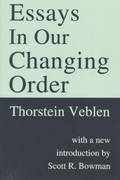12. What happens to the wage relative to rental rate of capital in the Foreign country? Does the change confonn to the StolperSamuelson theorem? 13. Describe the distributional effects of trade. Who are the absolute winners and losers? Justify each of your answers. a. Capital owners in Foreign (win, lose or ambiguous) b. Workers in Foreign (win, lose or ambiguous) c. Workers in Home (win, lose or ambiguous) d. Capital owners in Foreign (win, lose or ambiguous) ( Heckscher-Ohlin Model) There are two economies, Home and Foreign producing 2 goods, furniture (F) and cosmetics (C), using capital (K ) and labor (L). Furni- ture production is relatively more capital intensive than the production of cosmetics. The production functions for both goods satisfy the assumptions of constant returns to scale and diminishing returns to a single factor. Both economies share the same production technologies and consumers in all countries have identical homothetic pref- erences. Home has 600 units of capital and 400 units of labor while Foreign is endowed with 100 units of capital and 300 units of labor. Both factors can move freely across sectors. The world economy is currently under autarky. (a) Characterize an autarky equilibrium for Home. (b) Which country is relatively more labor-abundant?( Heckscher-Ohlin Model) There are two economies, Home and Foreign producing 2 goods, furniture (F) and cosmetics (C), using capital (K ) and labor (L). Furni- ture production is relatively more capital intensive than the production of cosmetics. The production functions for both goods satisfy the assumptions of constant returns to scale and diminishing returns to a single factor. Both economies share the same production technologies and consumers in all countries have identical homothetic pref- erences. Home has 600 units of capital and 400 units of labor while Foreign is endowed with 100 units of capital and 300 units of labor. Both factors can move freely across sectors. The world economy is currently under autarky. (a) Characterize an autarky equilibrium for Home. (b) Which country is relatively more labor-abundant?6. (4p) Consider a Heckscher-Ohlin model with two countries, Home and Foreign, and two factors of production, land (T) and labor (L). Land and labor are used to produce two goods, gadgets and widgets. The two countries have the same homothetic preferences. There are no factor intensity reversals. Endowments and production technologies are such that with trade, both countries produce both goods. Home is endowed with 400 units of land (T) and 200 units of labor (L). 3 Sample Midterm 1 Answer Key ECON203 Foreign's endowments are T*=500, L*=400. Gadget is the relatively labor-intensive good and widget is the relatively land-intensive good. Both countries produce both goods. Which of the following is true? (Two (2) answers are correct, indicate both.) A. Foreign widget production uses more labor relative to land than Home widget production. B. Foreign widget production uses less labor relative to land than Home widget production. C. Home and Foreign use the same amount of labor relative to land in widget production. D. Foreign gadget production uses more labor relative to land than Home gadget production. E. Foreign gadget production uses less labor relative to land than Home gadget production. F. Home and Foreign use the same amount of labor relative to land in gadget production.6. (4p) Consider a Heckscher-Ohlin model with two countries, Home and Foreign, and two factors of production, land (T) and labor (L). Land and labor are used to produce two goods, gadgets and widgets. The two countries have the same homothetic preferences. There are no factor intensity reversals. Endowments and production technologies are such that with trade, both countries produce both goods. Home is endowed with 400 units of land (T) and 200 units of labor (L). 3 Sample Midterm 1 Answer Key ECON203 Foreign's endowments are T*=500, L*=400. Gadget is the relatively labor-intensive good and widget is the relatively land-intensive good. Both countries produce both goods. Which of the following is true? (Two (2) answers are correct, indicate both.) A. Foreign widget production uses more labor relative to land than Home widget production. B. Foreign widget production uses less labor relative to land than Home widget production. C. Home and Foreign use the same amount of labor relative to land in widget production. D. Foreign gadget production uses more labor relative to land than Home gadget production. E. Foreign gadget production uses less labor relative to land than Home gadget production. F. Home and Foreign use the same amount of labor relative to land in gadget production.(a) Characterize an autarky equilibrium for Cruztopia. (b) Graphically represent the autarky equilibrium with quantity of production in clothing Qc on the x-axis and quantity of production in food QF on the y-axis. T Cruztopia opens up to free trade and observes a relative world price Pc PF . Let us further assume that the relative world price is higher than in the autarky relative price, T Pa Pc A PF > PF5. Now assume that all consumers in the country have Leontief preferences over food and clothing one unit of food is consumed with every unit of clothing. Find the equlibrium relative prices (PC/Pp) as a function of the parameters of the model (L, K, T, 20,219). Now assume the country opens to trade at a xed world price of p = 1 and p? = 1 (the country is small relative to its trading partners). 6. How will the country's pattern of trade (which good will be exported or imported) depend on the parameters of the model? How does the size of the labor force L affect the pattern of trade











